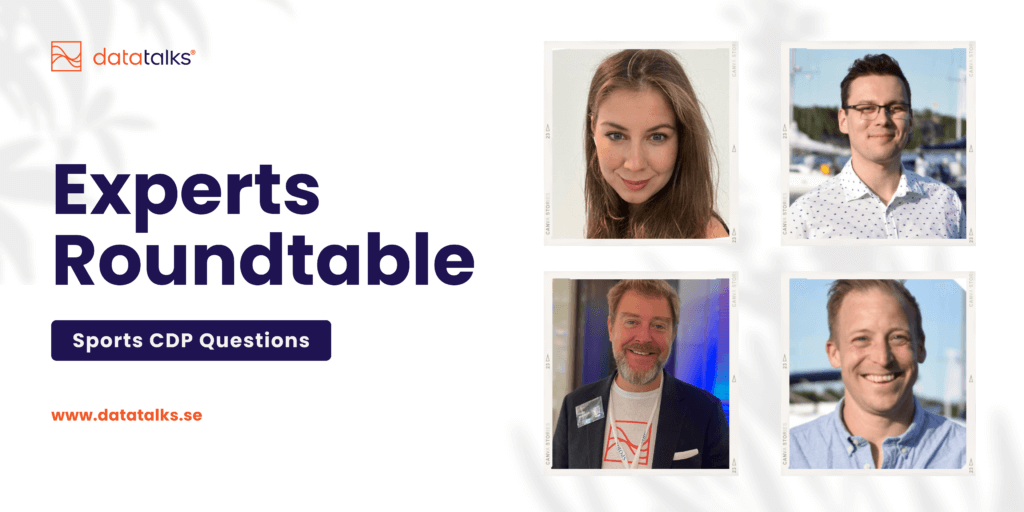
The internet is abuzz with lots of questions. Some of these coming from people that work in sports organizations. They want to know about CDPs and how they can leverage the CDP to increase revenue and fan engagement. So of course being the good listeners that we are, we sprung into action. That’s why I have consulted a panel of our Data Talks Sports CDP experts to answer those CDP questions and your CDP questions. If you have any question that we have not answered in this blog post, also check out our “CDP basics to get you started today“
Before we dive right in...
Subscribe to our blog today to ensure that you never miss valuable posts such as this one. We are passionate about helping sports organizations deliver a world-class fan experience, because better fan experience means better business. So why not use this opportunity to the fullest?

Introducing the Data Talks Sports CDP experts
Alex Josimovic our Account Executive for the DACH region

Alex is using her business and engineering education to bring world-class supporter experience within the sports industry through the Customer Data Platform (CDP) innovation. She believes that the CDP is the perfect solution for closing the gap between data opportunities and data execution. As an engineer, she is inspired by problem-solving and analytics, but as a business manager, she is motivated by fast execution. Merging these two, at first looks like opposite worlds but that is exactly what a CDP does, and that’s why Alex loves being part of Data Talks and working with the CDP.
Peter Kekesi our Product Manager

Peter is an experienced Product Manager of the Data Talks sports CDP (which is certified by the CDP Institute as a RealCDP). He has a background in B2B sales (sports, entertainment and e-com/retail) and digital marketing. He also holds a Master’s Degree focused in Business Administration, Management and Operations from a world top 100 university. Furthermore, Peter is currently a mentor at his former university and a former Google AdCamp participant.
Andreas Daun our Customer Success Expert

Andreas has 10+ years of working experience with Customer Data Management, Web Strategy, Online Marketing, Web Analytics, SEO and Enterprise Solution Selling. He is passionate, above all, about getting results. As a customer success expert at Data Talks, Andreas is focusing on making data driven marketing, marketing automation and customer experience easier. He is determined to show sports organizations the effect of putting supporter experience first.
Philip Nordfeldt our Head of Sales

Philip believes in the possibility of creating business value for sports organizations through the smart use of data. He also believes that organizations, big or small, need to challenge their current business processes and the way they make decisions by capturing, analyzing, and acting on intelligence that’s embedded in their transaction, social and web data. By connecting marketing and tech, we at Data Talks, can help sports organizations transform the way they do sports off the pitch, i.e the business side of things.
“I want to help sports organizations optimize decision making and improve their marketing performance”.
So without further ado, let’s go right into answering one of our first CDP questions.
Why the CDP?
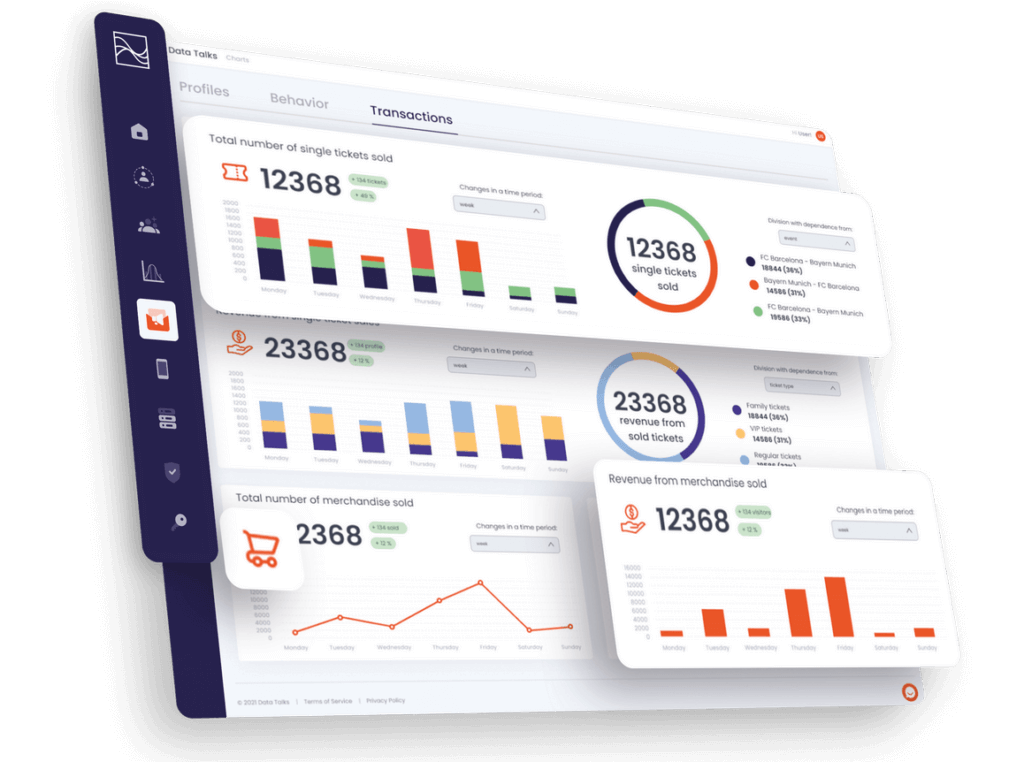
As Peter is our amazing product manager who has worked with some of the biggest names in the world of sports, it made sense to start with him. And ask him the million dollar question. (I call it the million dollar question because the CDP can literally make you a million dollars). But of course, it’s not enough to just throw this statement around. So I asked:
Lorraine: Peter, what makes a CDP an exceptional tool above others?
Peter: A CDP is an exceptional tool in my mind in terms of audience management because of its completeness. It is not just a fun tool to play around with on the surface within the sphere of fan engagement (e.g. a quiz tool), it actually has both the depth and the width. It is the centerpiece between technology and commercial tactics and between strategy and action.
The CDP’s completeness makes it an exceptional tool
Peter (continued): The depth means that both from a strategic and from a technical point of view it covers the most crucial areas in collecting, analyzing and acting on supporters’ data. As a sports organization, you are able to capture transactional, behavioral and other types of data with the CDP, which makes it already distinct from traditional CRM tools. Then, you can create custom data models with the CDP. Essentially, bringing that data to a marketer’s level. This makes the CDP superior to traditional Data Warehousing solutions. You are also able to do detailed segmentation on your supporters’ data with both the traits that come from source data (e.g. adress, birthday, etc.) but also on computed traits, such as someone who hasn’t been to a game in 3 months. Or people who have spent more than 1000 EUR in the last 6 months.
Another crucial factor that makes the CDP exceptional is the power of its inbuilt self-service analytics. The self-service analytics take the data from the sources and the CDP directly, such as purchases, segments or campaign results, and visualizes it in a way that key stakeholders in the organization need it to be.
Commercial uses of a CDP
Peter (continued): In terms of width, a CDP can cover a magnitude of commercial use cases, so it does not stop at a technical level. Since a CDP can have multiple activation channels in terms of messaging, web, mobile app or even offline activations, it really just comes down to the creativity of marketing teams on how effectively they can activate their audience to drive engagement, loyalty and revenues.
Lastly, the CDP works for the crowd. Instead of using the crowd. Meaning that we want to, and, with the help of a CDP, are able to offer truly the right messaging to the right audience, using the right channel and timing. This is definitely unique, a solution we could only dream about a couple of years ago when orchestrating supporter lifecycle journeys, creating season ticket campaigns or simply doing a personalized activation for one of a club’s sponsors, for example.
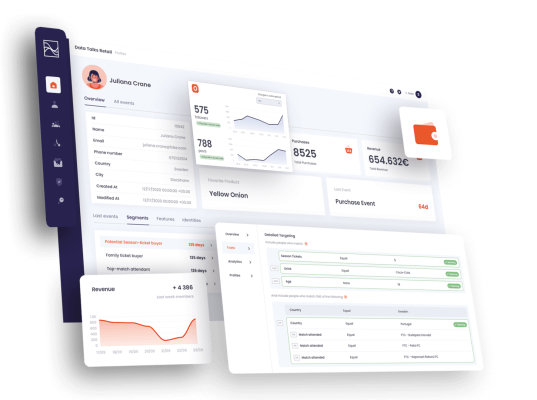
To see how this would look in action, explore the Data Talks CDP demo >>
What makes storing data in a CDP better
This is another one of the most important CDP questions that gets asked frequenly. Andreas, our customer success expert, works a lot with our customers and so his unique perspective is very fitting for this answer. When I asked him this is what he had to say:
Andreas: Ultimately, the CDP allows you to collect and merge all of your supporter data into one and the same platform. Only when you have that can you start creating value for your organization. The ability to collect, transform and map all of your data is the prerequisite to be able to create success for your organization.
Then the question is, what happens once you’ve collected and centralized all of your data into the CDP? Once the data is in the CDP, you finally have access to a single source of truth that we call the 360-degree view of your supporters. What this means is that, by collecting and unifying all your data, you are able to understand each supporter on a deeper level, such as their specific:
- Characteristics – such as age, gender, geographic location, and family size.
- Preferences – for instance, favorite merchandise products, games most often attended, types of memberships bought, type of ticket you bought.
- Behaviors – like their ticket purchase frequency, lifetime value, how often you go to games, total engagement, season ticket holder or just single ticket buyer. Also browsing behaviour like what memberships or products you look at.
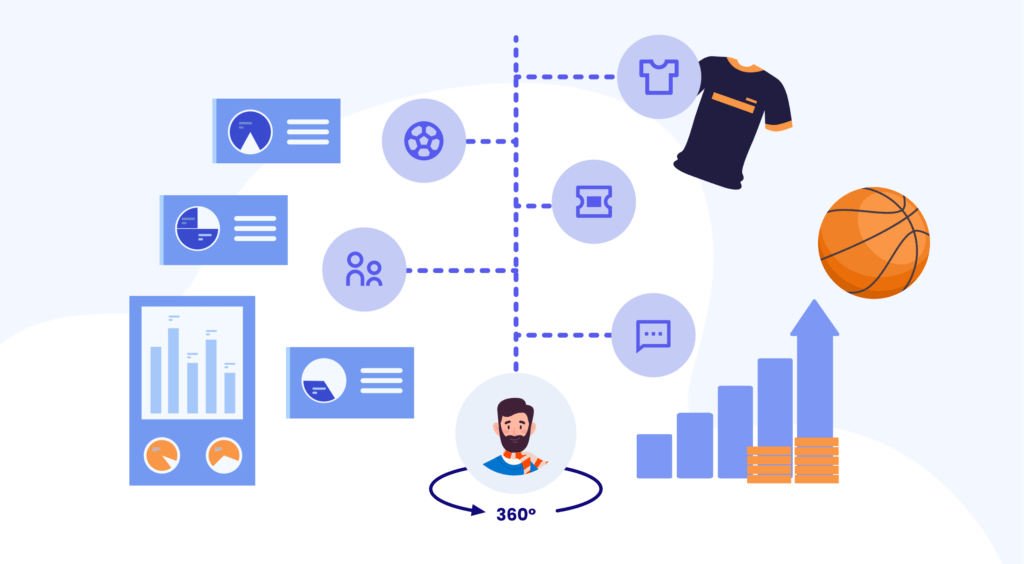
And this is why it’s better to store your data in a CDP
Andreas (continued): What makes storing data in a CDP better than any other option is that the CDP is built for any type of data. In the case of Data Talks, we are also experts on sports data which means that we already know what to do with your data. You don’t have to guess or explain to us which makes the process of importing data much faster and the structure of the data more logical. This gives you the freedom to segment your data on all the attributes as described above directly in the CDP. You don’t have this kind of flexibility in any other type of system.
With all of your data updated automatically in one and the same place, visualized in dashboards that you can understand and actionable at your fingertips, you can start uncovering patterns and trends in your supporters’ behaviors and directly target segments that are relevant. This is crucial because only then can you make data-informed decisions to provide your supporters with the most relevant experience.

Why Sports Organizations need a CDP to grow and thrive
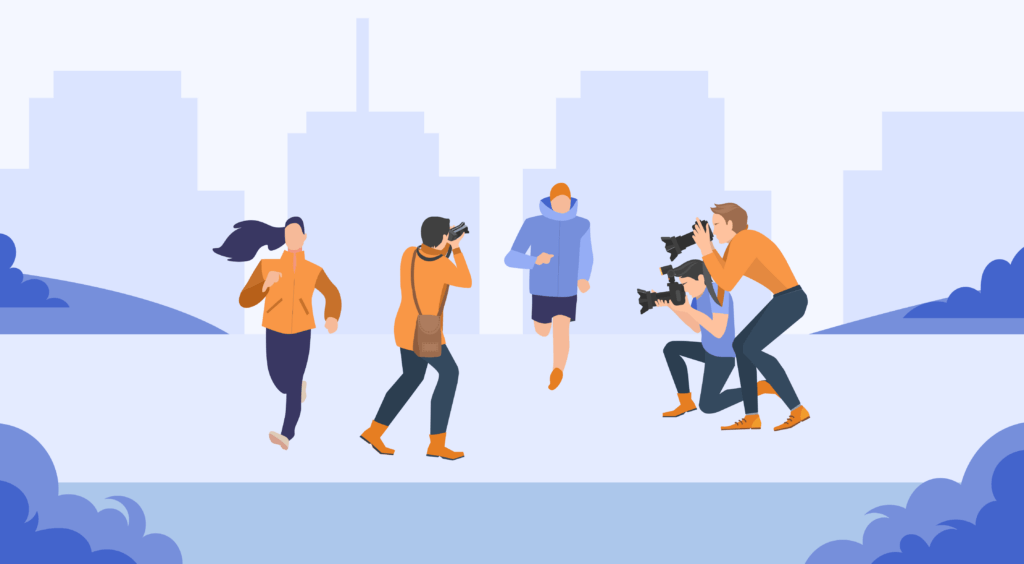
Women in sports: beyond the hashtag – time to make a difference
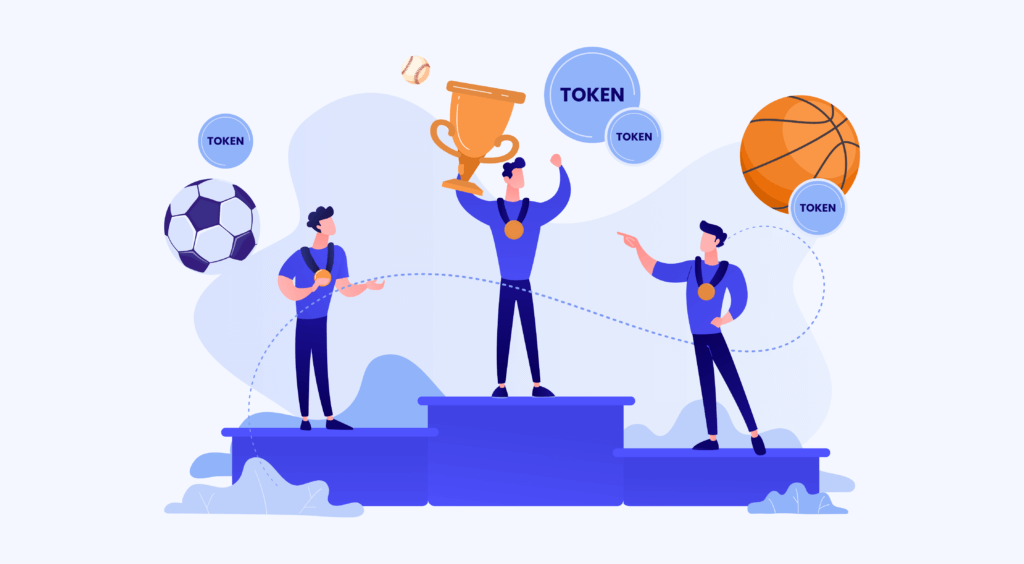
Everything You Need to Know About NFTs in Sports
Why do people hesitate to implement a CDP?
This question was perfect for Philip, our head of sales, as he has the most contact with potential customers. Most become customers because of the benefits they can get from using a CDP. But a few do say no, despite the evidence.
This is one of the most important CDP questions to ask, especially if you also had some doubts.
Lorraine: What are some of the biggest objections you hear when talking to potential customers about the CDP? And are these objections substantiated, in your expert opinion?
We’re not ready
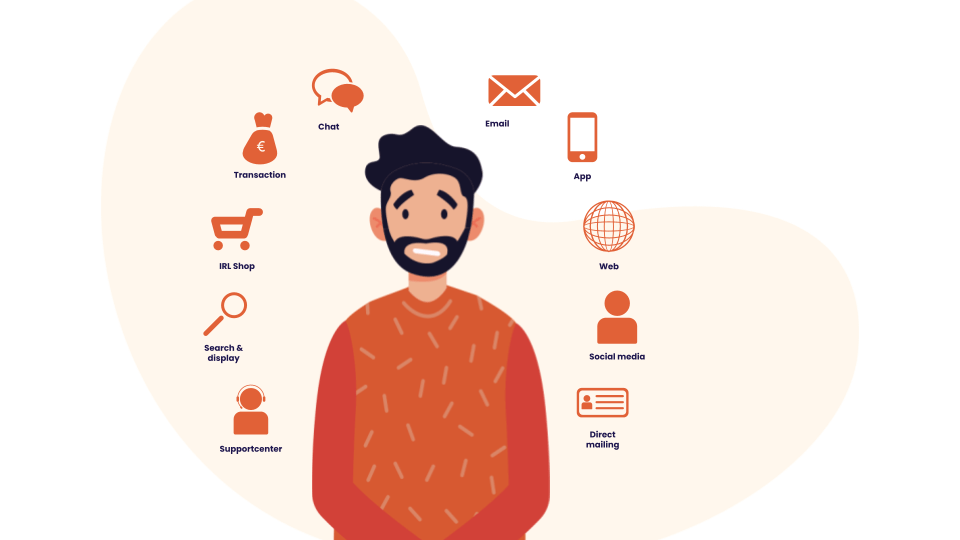
Philip: “This sounds interesting, but … we are not ready to start just yet” is an objection I hear often.
I understand and can empathize with this. Especially because, in one way, the sports industry is an industry rooted in tradition and doing what works versus “experimenting” with technology, if you will. But then the case for the CDP is so compelling that sometimes for me it all boils down to: working with your supporter data will help you grow your database, sell more tickets, and sell more merchandise. This is proven by so many cases we have from our customers. So going back to the objection – I am not ready. Although I can emphathize, I often wonder, not ready for what? Not ready to sell more tickets? Not ready to make your highest revenue yet?
Furthermore, because we help sports organizations get up and running in days and do all the work without burdening them with more than a few hours of their time, so they can start selling more tickets, I always wish that somehow I can show everyone that this objection does not really hold much water. Everyone benefits from the CDP so not being ready is essentially not a reason to postpone all the amazing benefits you could reap. So I would say, even when you don’t think you are ready, do it anyway. Because the results will speak for themselves. And you will only have yourself and your decision to thank for all of that success.
And, last but not least, because many of our customers can tell you that they save quite a lot of time by working with our CDP, instead of spending a lot of time with costly manual processes. So, tell me again, why are you not ready?
We don’t have enough resources
Philip (continued): The resources you have to put in are nothing compared to the results you will gain. We have many customer success stories to prove this.
Firstly, we help you get started. And just like I said before, we won’t burden you with more than just a few hours of your time.
But, let’s calculate what additional resources would cost in relation to the increased revenue you will generate. The revenue you stand to generate, far outweighs the cost of additional resources. So, then you might consider hiring additional resources.
Many of our customers have gotten interns from universities or schools to teach them more on digital marketing. Digital is a trend that sports organization can never escape. Not if they want to stay relevant to the new generation of fans. And these students that our customers work with, love working with data to be more efficient in marketing. Furthermore, doing this is also a great way to see if this person would be a good fit to hire after the internship. Two birds one stone, you see.
I need to run this internally by the team
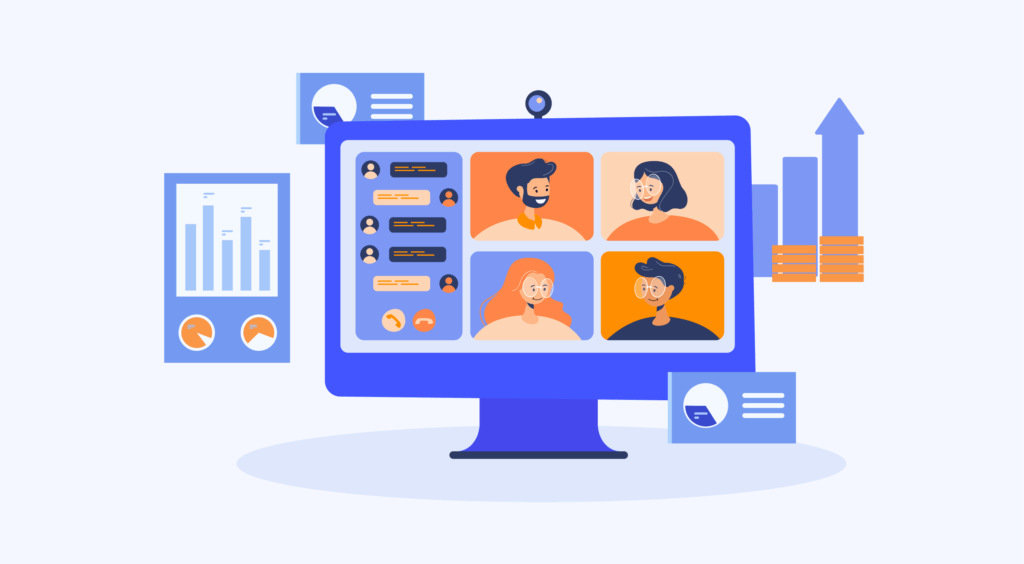
Philip (continued): This objection I really can understand. But let me start off with a warning and encouragement. Someone needs to decide for your sports organizating to do this. So that you can then start implementing and learning to make better use of your data. But if you get into a huge decision round and ask everyone for their input, I am sure there is at least one person who would say objection one or two, and then boom! you are stuck…
However, I do have a couple of tips for how you can get buy-in from your team.
Tips for getting buy-in from your team
- Connect use cases with key organizational goals – and this is good for you, as the decision maker to understand as well. What goals does your organization have? Do you perhaps want to sell more tickets this season, and the next, and the one after that? Well, then there is an alignment between your organization’s goals and what the CDP can do for you. Understanding this, will give you even more confidence in your decision to implement a CDP. If you are confident, chances are your team will be too.
- Promote a data driven culture – We are living in the fastest-changing communications technology landscape than ever before. And this is only going to increase. Traditional ways of doing things have carried us thus far but it’s time to allow technology to help us forward. The CDP is the basic foundation you need to navigate this terrain well.
- Highlight how everyone benefits from using the sports CDP – it’s not just one department that benefits from having a CDP. Rather, everyone benefits. From gaining more confidence in your decision making because it is rooted in facts and data insights derived from the CDP to saving time, effort and money because all your data is unified and stored in one place, the benefits are many. And as you probably already noticed, such benefits are not only reserved to one function of your organization. The CEO and CCO who work to increase revenue can use the CDP. And the marketer who does all the ticket campaigns, benefits as well. So understanding this will help you get the buy in you need from your team.
The Data Talks CDP trial
One of the ways that the team has found to make the CDP implementation easier for sports organizations is by having a free trial. And our Account Executive Alex has worked with a lot of our now customers on this. So I thought I would ask her about their experience. Although this is not one of the first CDP questions to come to one’s mind I still think it’s one of the most crucial CDP questions ask. It’s all about taking everything from theory to practice.
Lorraine: What reactions have you gotten from people once they finally see what the CDP is capable of?
Alex: They love it.
They love how simple it is to use the platform, that they can get instant insights with a few clicks, vs. requesting the reports from their data team. Also, they were surprised by the wide range of possibilities they got once when their data was visualized and easy to act on.
One of our customers said: ” The most impressive part of our platform is that it gives you the full circle. The data is cleaned and visualized, you can create instant segments with just a few clicks, and then you can send personalized messages. Full circle from the collection and data analytics to data activation from one platform, without a single line of code written. ”

Interested in the trial? Chat with Alex >>
Some final conclusions from our panel of experts
There you have it. Your CDP questions answered!
I know that some of these CDP questions might not have been pressing for you. But I believe that understaning the conversations around them is important. Because like I said, the internet is full of “answers”. But they are never really in-depth. That’s why having expert opinions is very important.
If you still have doubts, remember to read our CDP basics to get you started today blog post. Another fantastic read is why sports organizations need a CDP to grow and thrive.
But if I were to condense the answers to these CDP questions to a few key takeaways, I would say:

A CDP is not all buzz. It’s completeness and the value it delivers as a result, is superior to other systems such as a CRM, fan engagement tools, and data warehouses

If you are looking to take your data from unreliable, out of date, incomplete, and duplicated, to having a single, reliable, up-to-date and complete source of truth, look no further. The CDP is your best friend

There is always a reason why you should do something but can’t. But the truth is, the revenue you stand to make from your CDP implementation should be motivation enough for you to spring into action.

Don’t dismiss it, until you have tried it. Sometimes the benefits of the CDP and the ease of implementing it can seem to be too good to be true. But why not try it out. It would be a shame if you missed out on all of these benefits just because you let your scepticism get the best of you.
